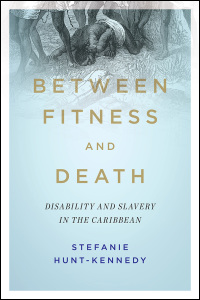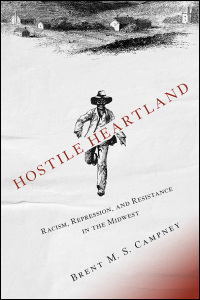This August marked the 400th anniversary of slaves arriving in America. To commemorate the anniversary, The New York Times Magazine launched the 1619 Project, a major initiative led by Nikole Hannah-Jones, with the goal of re-framing our understanding of the impact of slavery and recognizing the contributions of Black Americans to American democracy. The initiative has included a special issue of the magazine, podcasts, special events, a curriculum designed by the Pulitzer Center and more. Inspired by the 1619 Project, we’ve put together five lists of our publications related to the project on Black women’s activism, popular music, mass incarceration and lynching, sports and racism, and slavery, racism, and politics. As the year closes and a new decade beckons, we invite you to explore these lists alongside the 1619 Project and consider how we can use this important scholarship to move forward as a nation towards an antiracist future.
Slavery, Racism, and Politics Reading List

Slavery at Sea: Terror, Sex, and Sickness in the Middle Passage
By Sowande’ M. Mustakeem
Mustakeem’s groundbreaking study goes inside the Atlantic slave trade to explore the social conditions and human costs embedded in the world of maritime slavery. She offers provocative new insights into how gender, health, age, illness, and medical treatment intersected with trauma and violence transformed human beings into the world’s most commercially sought commodity for over four centuries.
 Sex, Sickness and Slavery: Illness in the Antebellum South
Sex, Sickness and Slavery: Illness in the Antebellum South
By Marli F. Weiner with Mazie Hough
Weiner skillfully integrates the history of medicine with social and intellectual history in this study of how race and sex complicated medical treatment in the antebellum South. Sex, Sickness, and Slavery argues that Southern physicians’ scientific training and practice uniquely entitled them to formulate medical justification for the imbalanced racial hierarchies of the period.
That’s Not Me I See On TV…: African American Youth Interpret Media Images of Black Women
By Valerie N. Adams-Bass, Keisha L. Bentley-Edwards, and Howard C. Stevenson
How do African American youth perceive and interpret images of black women in popular media? Adams-Bass, Bentley-Edwards and Stevenson discuss their findings.
By Amy O. Yeboah
Yeboah examines the impact of the “Make America Great Again” campaign at Howard University, a historically black campus.
Myths America Lives By: White Supremacy and the Stories That Give Us Meaning
By Richard T. Hughes
In this revised second edition of his celebrated work, Richard T. Hughes delves anew into the thought of black critics dissatisfied with America’s betrayal of its foundational beliefs. Speaking for people often marginalized in American life, black activists offer important perspectives on African American experiences, the pervasiveness of white supremacy, and the ways America can embrace, and deliver on, its egalitarian promise.
Neo-Passing: Performing Identity After Jim Crow
Edited by Mollie Godfrey and Vershawn Ashanti Young
African Americans once passed as whites to escape the pains of racism. Today’s neo-passing has pushed the old idea of passing in extraordinary new directions. Godfrey and Young present essays that explore practices, performances, and texts of neo-passing in our supposedly postracial moment. Together, the works reveal that the questions about performing and contesting identity in relation to social norms remain as relevant today as in the past.
 In a Classroom of Their Own: The Intersection of Race and Feminist Politics in All-Black Male Schools
In a Classroom of Their Own: The Intersection of Race and Feminist Politics in All-Black Male Schools
By Keisha Lindsay
Many advocates of all-black male schools (ABMSs) argue that these institutions counter black boys’ racist emasculation in white, “overly” female classrooms. This argument challenges racism and perpetuates antifeminism. Lindsay explains the complex politics of ABMSs by situating these schools within broader efforts at neoliberal education reform and within specific conversations about both “endangered” black males and a “boy crisis” in education.
 Humane Insight: Looking at Images of African American Suffering and Death
Humane Insight: Looking at Images of African American Suffering and Death
By Courtney R. Baker
In the history of black America, the image of the mortal, wounded, and dead black body has long been looked at by others from a safe distance. Courtney Baker questions the relationship between the spectator and victim and urges viewers to move beyond the safety of the “gaze” to cultivate a capacity for humane insight toward representations of human suffering.
 Between Fitness and Death: Disability and Slavery in the Caribbean
Between Fitness and Death: Disability and Slavery in the Caribbean
By Stefanie Hunt-Kennedy
Long before the English became involved in the African slave trade, they imagined Africans as deformed beings. The English drew on pre-existing European ideas about monstrosity and deformity to argue that Africans were a monstrous race, suspended between human and animal, and as such only fit for servitude. Audacious and powerful, Between Fitness and Death is a groundbreaking journey into the entwined histories of racism and ableism.
 Hostile Heartland: Racism, Repression, and Resistance in the Midwest
Hostile Heartland: Racism, Repression, and Resistance in the Midwest
By Brent M. S. Campney
Campney analyzes the institutionalized white efforts to assert and maintain dominance over African Americans in the Midwest. Though rooted in the past, white violence evolved into a fundamentally modern phenomenon, driven by technologies such as newspapers, photographs, automobiles, and telephones. Other surprising insights challenge our assumptions about sundown towns, the people targeted by whites, law enforcement’s role in facilitating and perpetrating violence, and the details of African American resistance.
Keep an eye out for the rest of our lists on popular music, mass incarceration and lynching, and sports and racism, and make sure to check out yesterday’s list on Black women’s activism. You can find all the lists here.



